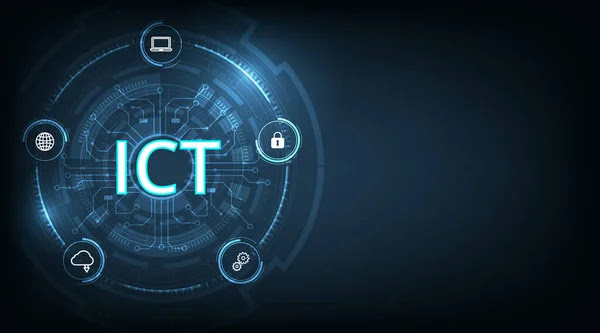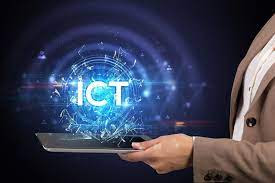In an increasingly urbanized world, cities face a myriad of challenges, from traffic congestion and pollution to inefficient resource management. The concept of smart cities has emerged as a transformative solution to address these challenges. A smart city leverages the power of Information and Communication Technology (ICT) and Internet of Things (IoT) technologies to create connected and efficient urban environments. This article delves into the concept of smart cities, exploring how these technological advancements are reshaping urban development, improving quality of life, and paving the way for a more sustainable future.
Table of Contents:
- Defining Smart Cities: A Paradigm for Urban Transformation
- Key Components of Smart Cities: Digital Infrastructure and Connectivity
- IoT Technologies: The Backbone of Smart Cities
- Enhancing Urban Mobility and Transportation
- Efficient Resource Management and Sustainability
- Empowering Citizens: Citizen Engagement and Participation
- Data-Driven Decision-Making: Improving Urban Governance
- Challenges and Considerations in Smart City Implementation
- Privacy and Security Concerns in the Age of Smart Cities
- Future Prospects: Scaling Up Smart City Innovations
1. Defining Smart Cities: A Paradigm for Urban Transformation
Smart cities are more than just technological showcases; they represent a paradigm shift in urban development. A smart city integrates digital technology, data-driven insights, and citizen engagement to enhance urban living and address urban challenges. The primary goal is to create cities that are more livable, sustainable, and responsive to the needs of their residents.
2. Key Components of Smart Cities: Digital Infrastructure and Connectivity
At the heart of a smart city lies a robust digital infrastructure that enables seamless connectivity. High-speed internet access, Wi-Fi hotspots, and fiber-optic networks form the backbone of this digital ecosystem, fostering communication between citizens, devices, and city services.
3. IoT Technologies: The Backbone of Smart Cities
The Internet of Things (IoT) plays a pivotal role in the functioning of smart cities. IoT devices, ranging from sensors embedded in infrastructure to wearable gadgets, collect and transmit data. This data, when analyzed, provides valuable insights into various aspects of urban life, from traffic patterns to energy consumption.
4. Enhancing Urban Mobility and Transportation
Traffic congestion and inadequate public transportation are common urban challenges. Smart cities employ IoT-based solutions to manage traffic flow, optimize public transportation routes, and introduce intelligent parking systems. This not only reduces congestion but also contributes to air quality improvement.
5. Efficient Resource Management and Sustainability
Smart cities prioritize resource efficiency to ensure long-term sustainability. Advanced metering and monitoring systems help manage energy, water, and waste resources. For instance, smart grids regulate energy distribution, and water sensors detect leaks, leading to more efficient resource utilization.
6. Empowering Citizens: Citizen Engagement and Participation
Citizen engagement is a cornerstone of smart cities. Digital platforms enable residents to voice concerns, provide feedback, and actively participate in decision-making processes. Smart cities empower citizens to contribute to their communities' development.
7. Data-Driven Decision-Making: Improving Urban Governance
The availability of data from IoT devices and digital platforms enables data-driven decision-making by city officials. Real-time insights into urban trends and challenges guide policymakers in developing effective strategies to address urban issues promptly.
8. Challenges and Considerations in Smart City Implementation
Implementing smart city initiatives is not without challenges. Complex integration of various technologies, ensuring equal access to digital services for all citizens, and aligning city planning with technological advancements require careful consideration and strategic planning.
9. Privacy and Security Concerns in the Age of Smart Cities
The vast amounts of data generated in smart cities raise concerns about privacy and security. Protecting citizen data from breaches and ensuring transparent data usage policies are critical to building trust between the government and residents.
10. Future Prospects: Scaling Up Smart City Innovations
As technology advances, the possibilities for smart city innovations are limitless. The integration of Artificial Intelligence (AI), 5G technology, and predictive analytics will further enhance the efficiency and responsiveness of smart cities. Moreover, collaboration among cities globally will facilitate knowledge-sharing and accelerate the development of best practices.
Conclusion
Smart cities represent a transformative approach to urban development that harnesses the power of technology to create connected and efficient urban environments. Through the integration of IoT technologies, data-driven decision-making, and citizen engagement, smart cities tackle urban challenges, enhance resource management, and improve the overall quality of life for residents. While challenges such as privacy, security, and equitable access must be addressed, the prospects for smart cities are promising. As technology continues to evolve, smart cities will play an increasingly crucial role in shaping the future of urban living.


